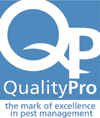From an early age, Stephanie Cappelleri knew she wanted two things out of her career: to work with numbers and to work with people.
Those desires stayed with her throughout business school at the University of Minnesota, where she earned a finance degree, and eventually led her to found her own company in 2000. Now, more than 20 years later, she’s grown Delano-based Simply Benefits into a thriving boutique firm that specializes in providing high-level human resources and employee benefits solutions to small to mid-sized employers. The firm also works with clients at the individual level to help them find and secure health insurance.
“We’re very knowledgeable about the insurance, HR and finance areas because this is all we’ve been doing for the last 22 years,” Cappelleri said. “We absolutely love what we do and that’s one of the things that makes us shine.”
One of Cappelleri’s top priorities is to make the often-confusing world of benefits, insurance and human resources more user friendly and easier to understand for both business owners and employees.
“When I meet with people, I tell them that if they call their insurance company with a question and they get an answer that doesn’t sound right, they can reach out to us,” she said. “We believe that knowledge is power and if you can understand why some things are covered and other things are not, you’ll be a smarter consumer who can make better decisions for your bottom line.”
Cappelleri spends much of her time meeting with established businesses that already have benefits programs in place but are looking for the more personalized, knowledgeable and responsive service that Simply Benefits provides. However, in recent years, she’s seen an uptick in the number of small startups and mom-and-pop companies who are interested in offering benefits to their employees but aren’t sure where to start.
“We help them understand what the rules are for group insurance. We’ll also talk with them about their HR processes and accounting systems and share how we can be a resource,” she said. “Essentially, we’re here to help our fellow business owners and handle all the work behind the scenes so they can get out there and do what they’re good at.”
If you’re a small business owner who is considering adding benefits, here are some of Cappelleri’s tips for getting your ducks in a row:
- Talk with your employees: Don’t just send an email or a text – actually sit down with your team members to have a one-on-one conversation about benefits. Ask them what they’re doing for insurance now and find out if having insurance is something that’s important to them. This can be done as a stand-alone meeting or as part of an annual review, but either way, it’s definitely important that it happens. “Every employer should be doing a performance review with their employees, but it shouldn’t just be about the employer critiquing the employee’s behavior,” Cappelleri said. “The employer should be gleaning information on how they can keep that employee happy because without employees, the employer won’t be able to survive. And vice versa.”
- Study the data and see where it leads you: After speaking with your employees, asking the right questions and really listening to the answers, you should have a better sense of what types of benefits and plans might be most attractive to them. For example, if few of your employees say they go to the doctor regularly, then they’re probably not interested in paying a lot for insurance. Based on this information, you may opt to offer a super high-deductible plan and, in addition, help your employees fund a health savings account (HSA). “Now the employees see value in what their employer is offering,” Cappelleri said. “That creates loyalty, binds that employee to the employer and encourages them to stick around long term.”
- Do some research: It can be difficult to talk with employees about insurance when you’re not really clear on it yourself. Fortunately, all the major insurers that operate in Minnesota have comprehensive websites that explain the different types of coverage they offer. These sites are chock full of information and can provide a good overview of the plans that are out there – and how much they’ll cost you.
- Know where to turn for help: Once you’ve looked into insurance benefits on your own, you may feel like your head is spinning. That’s because one insurance company alone may offer 40 different plans by four different networks – and that can make it really difficult to determine which one is the best fit. This is where Cappelleri comes in. When employers meet with her, she can quickly pull up all their options and help narrow them down until they find the one that fits their needs, wants and budget. From a benefits standpoint, the key areas she focuses on are the network, the deductible level, the out-of-pocket maximum, hospitalizations and prescriptions because those are the things that most employees will actually utilize. However, she’s there to assist with anything an employer needs to make the overall process less overwhelming. And even once everything is in place, Cappelleri and her team are always standing by. “We stay in touch with our clients throughout the year, not just at renewal time,” she said. “We’re committed to making sure things run smoothly for everyone we work with.”
Abra Kadabra Environmental Services is proud to share the wisdom of business owners from our community through our thought leadership series. If you’d like to be featured, click here.







